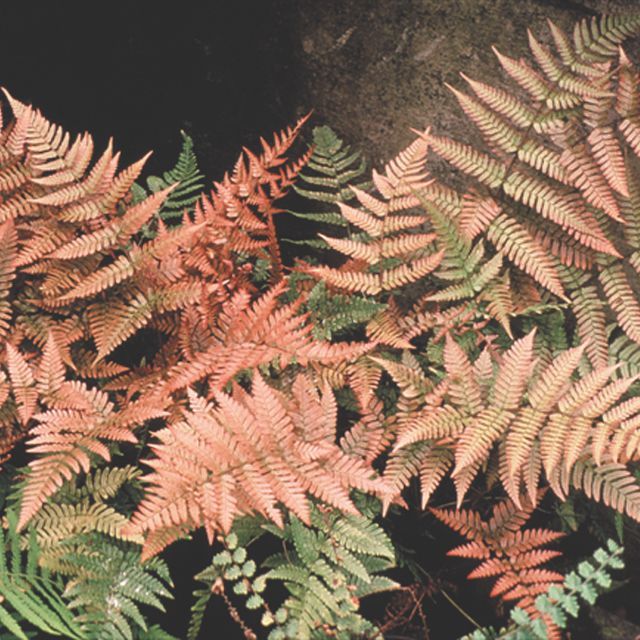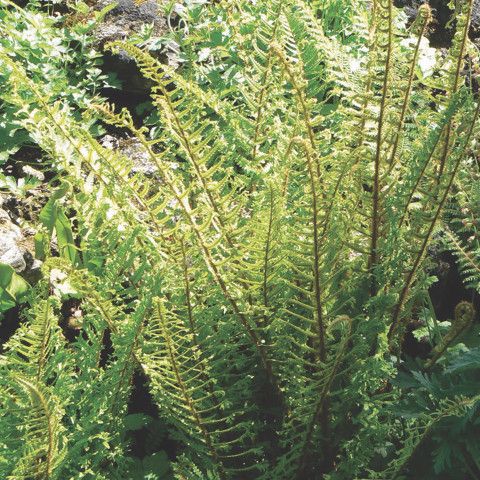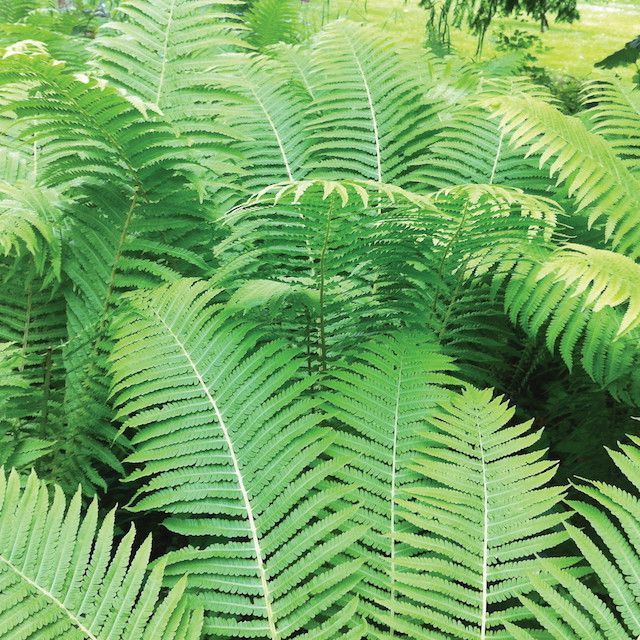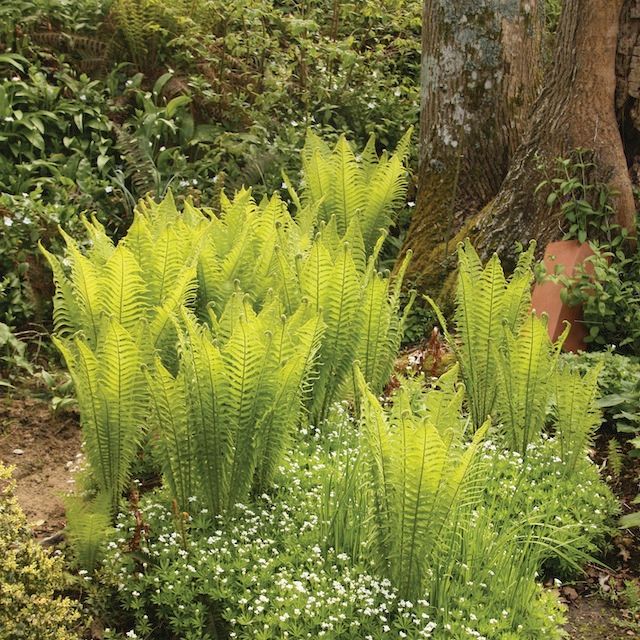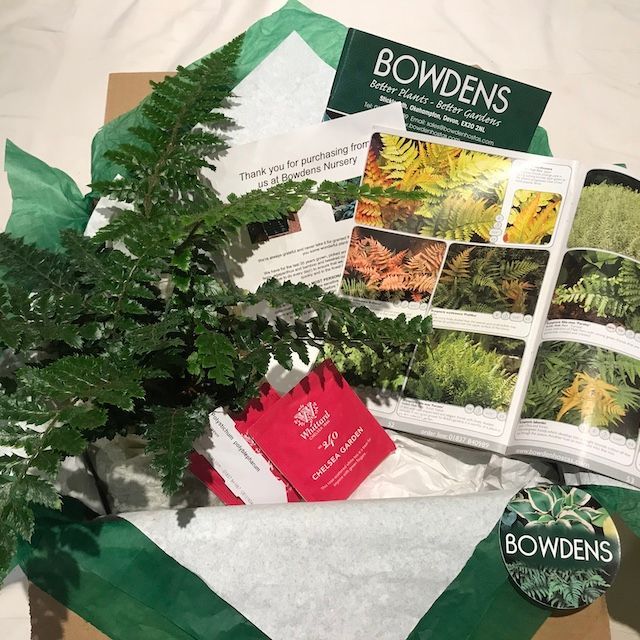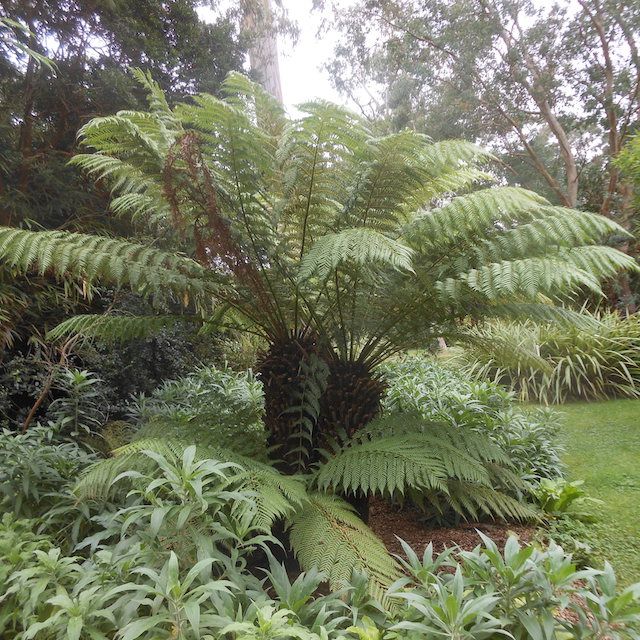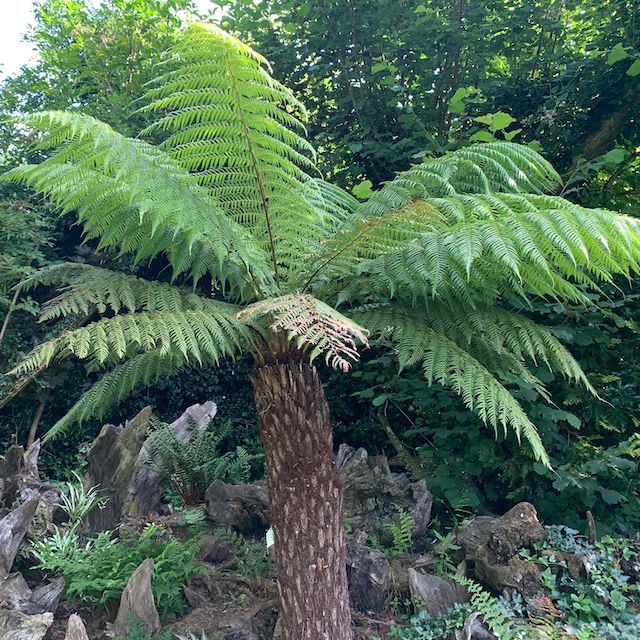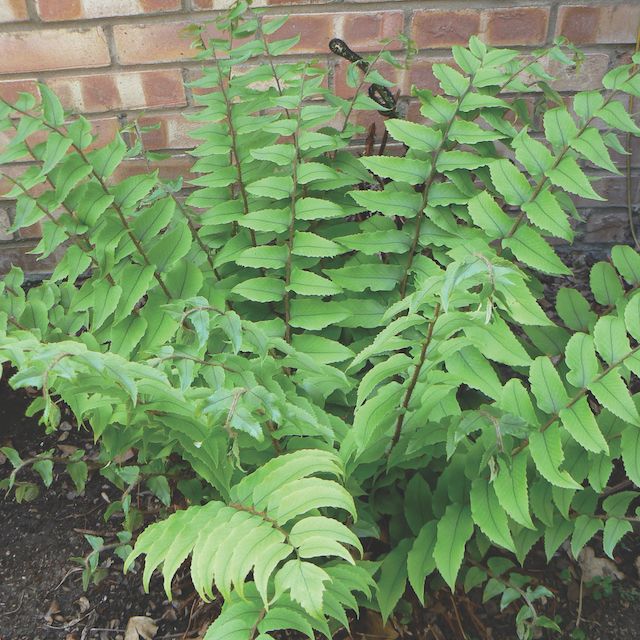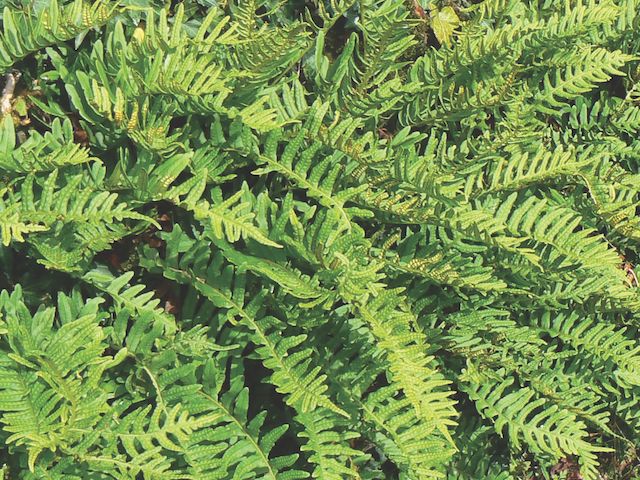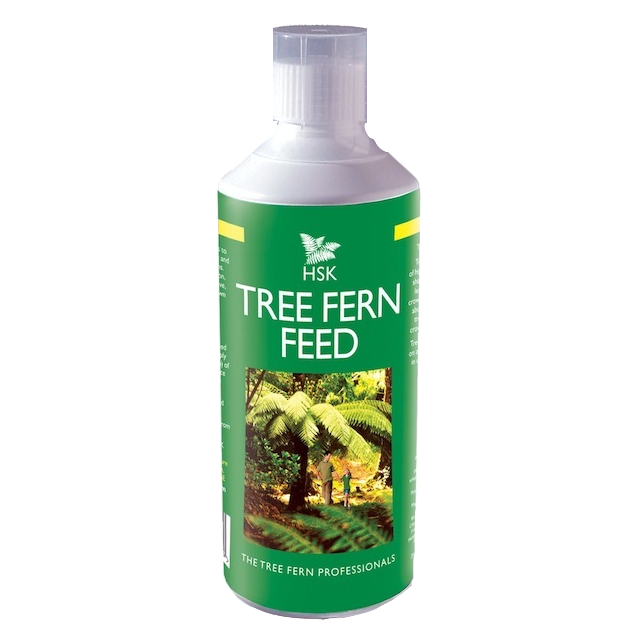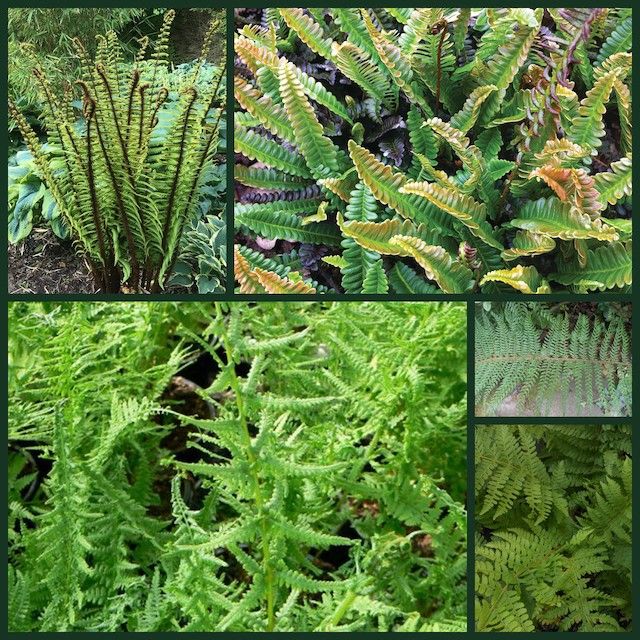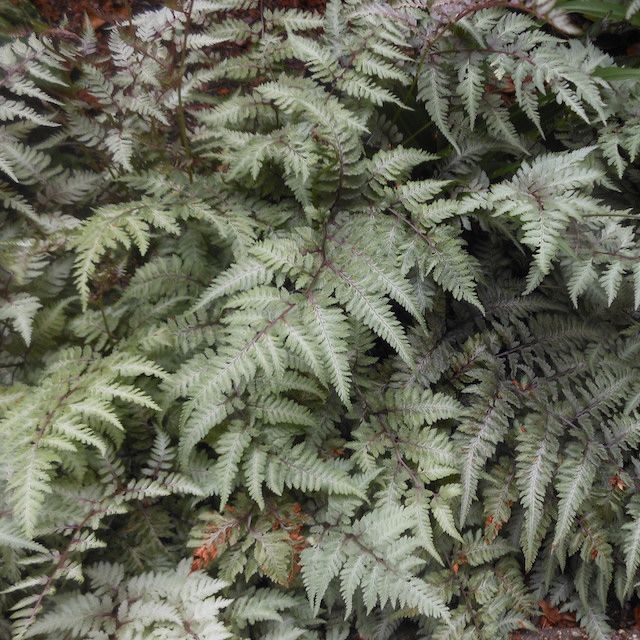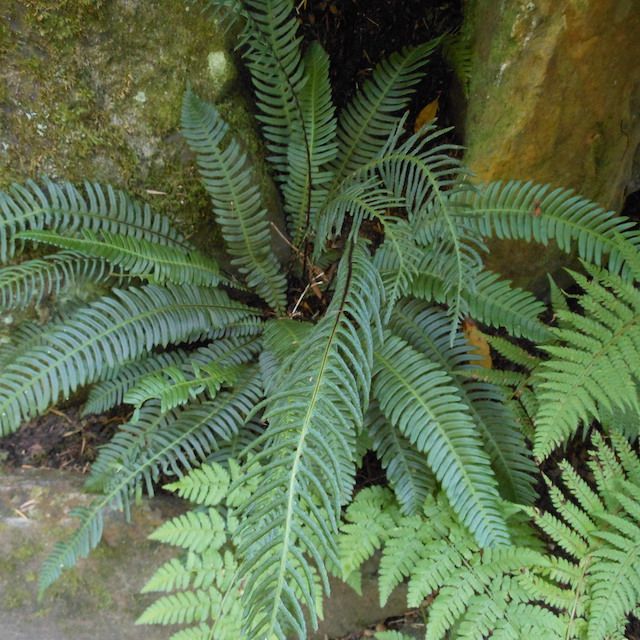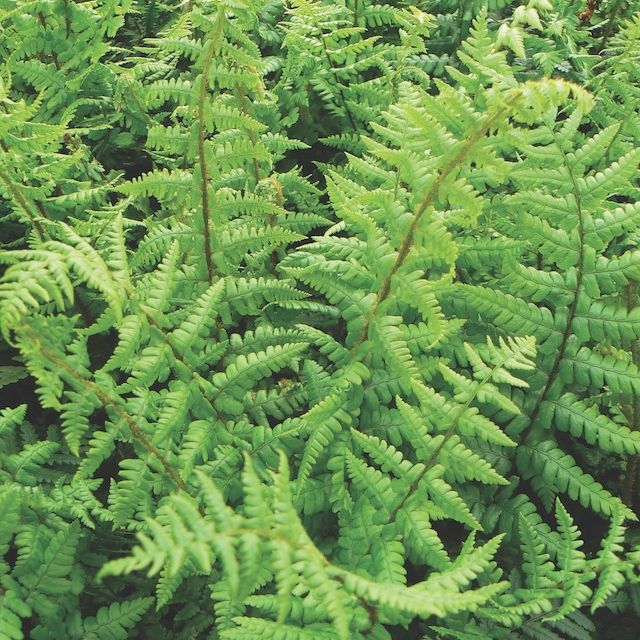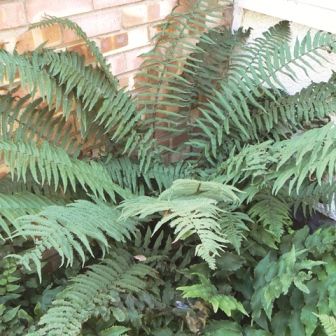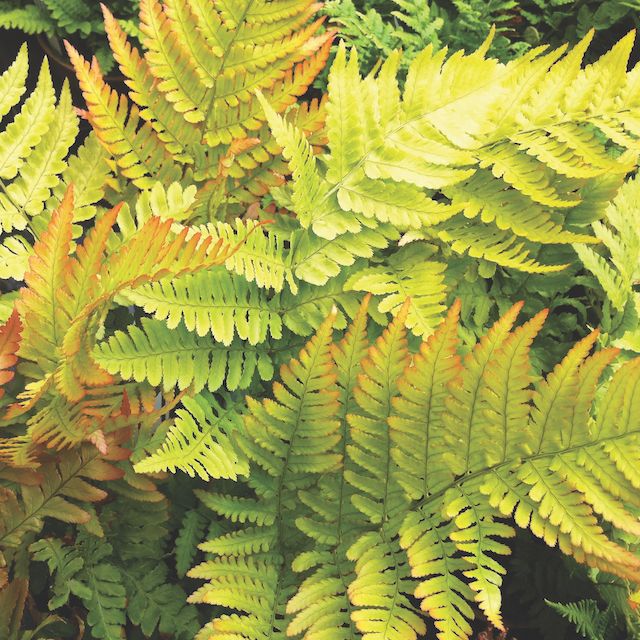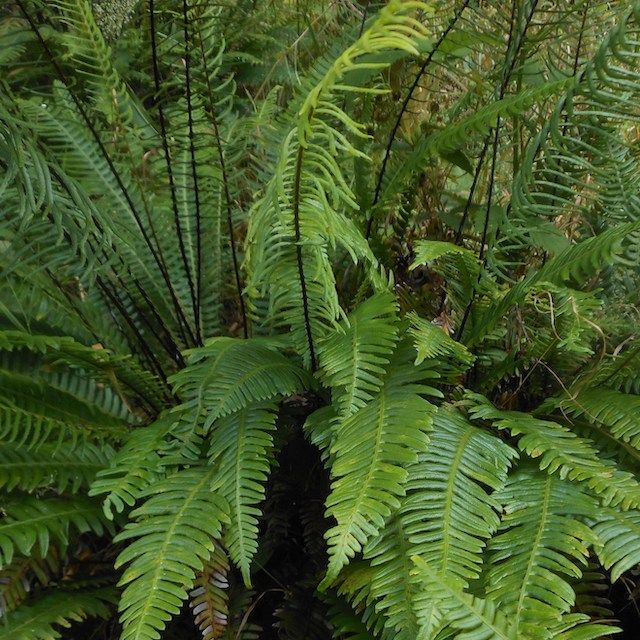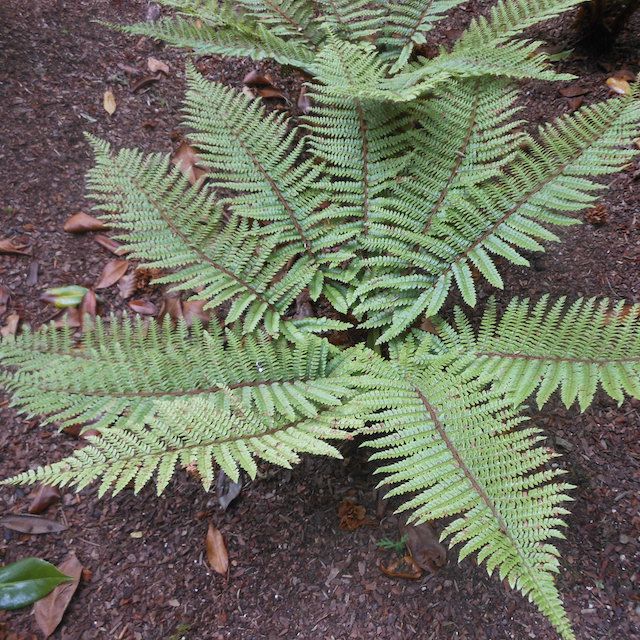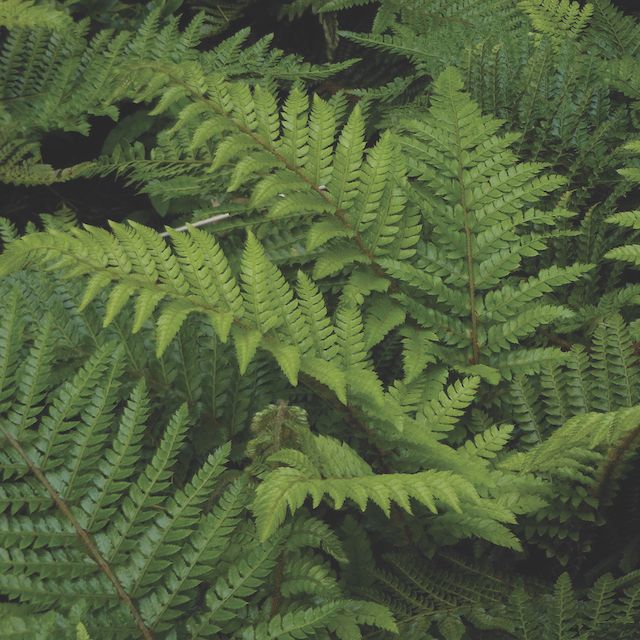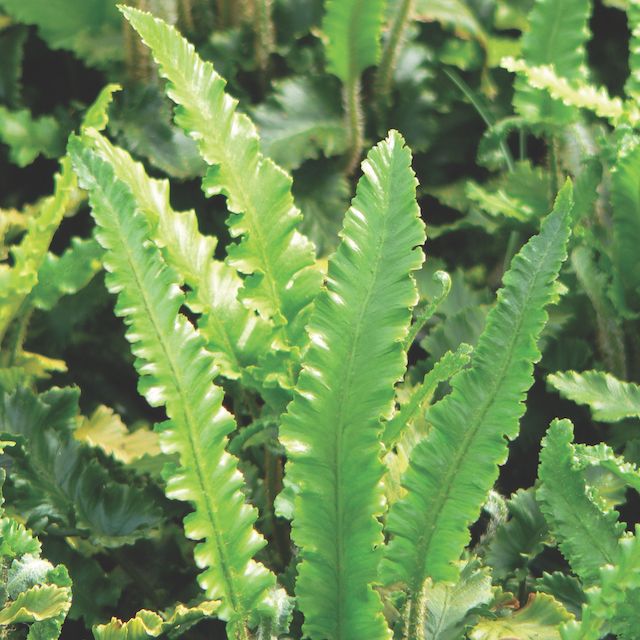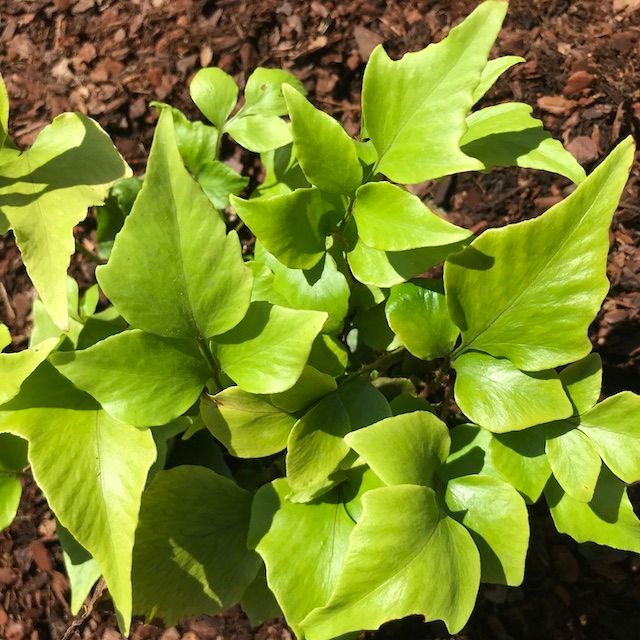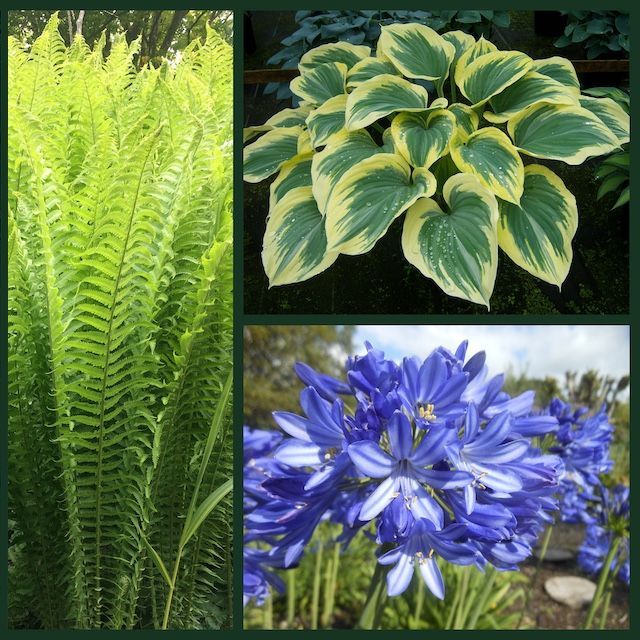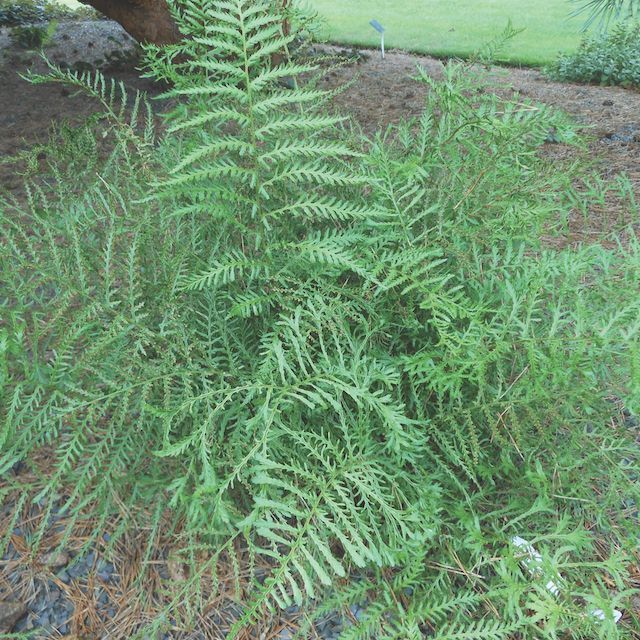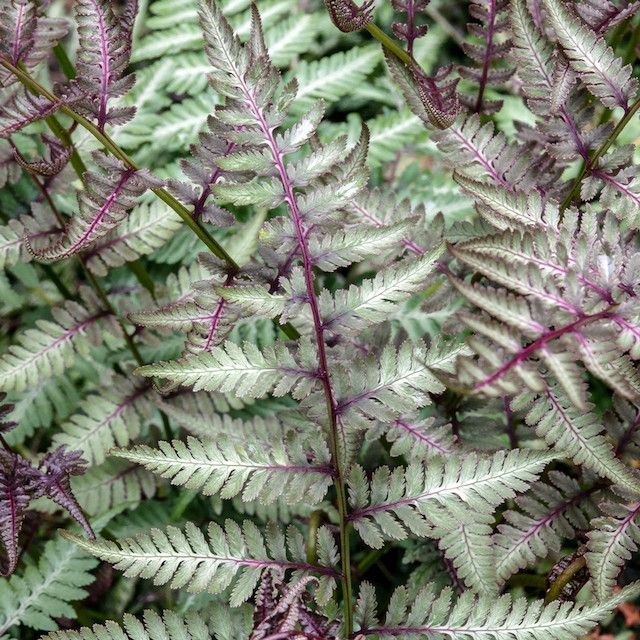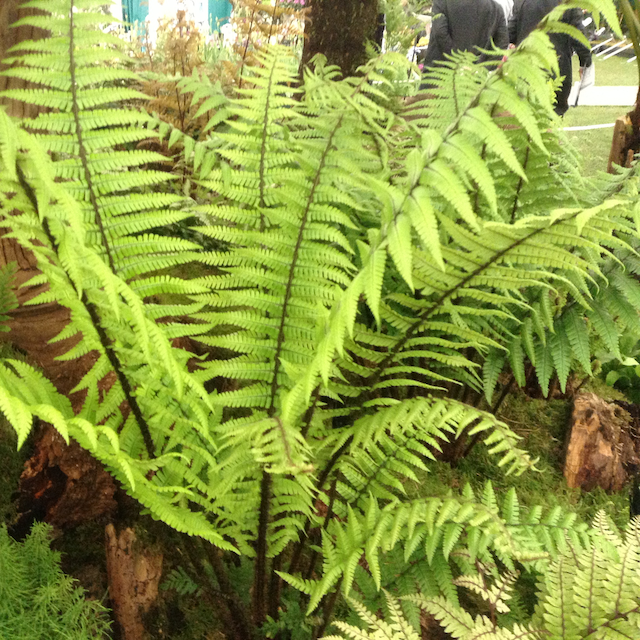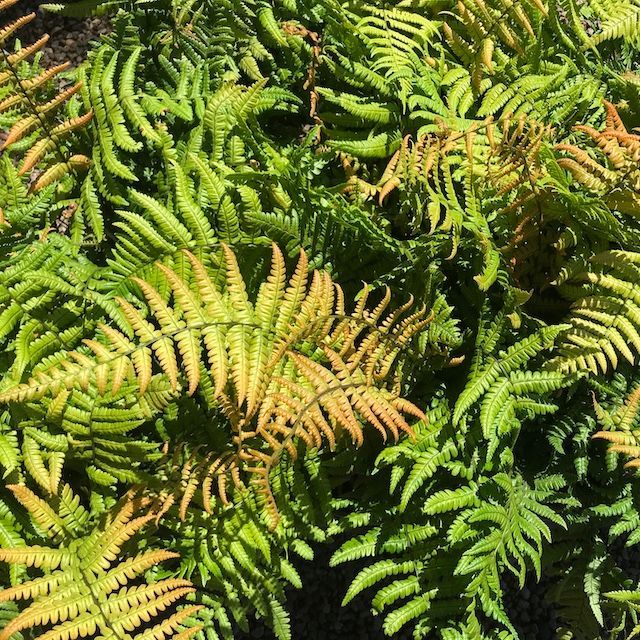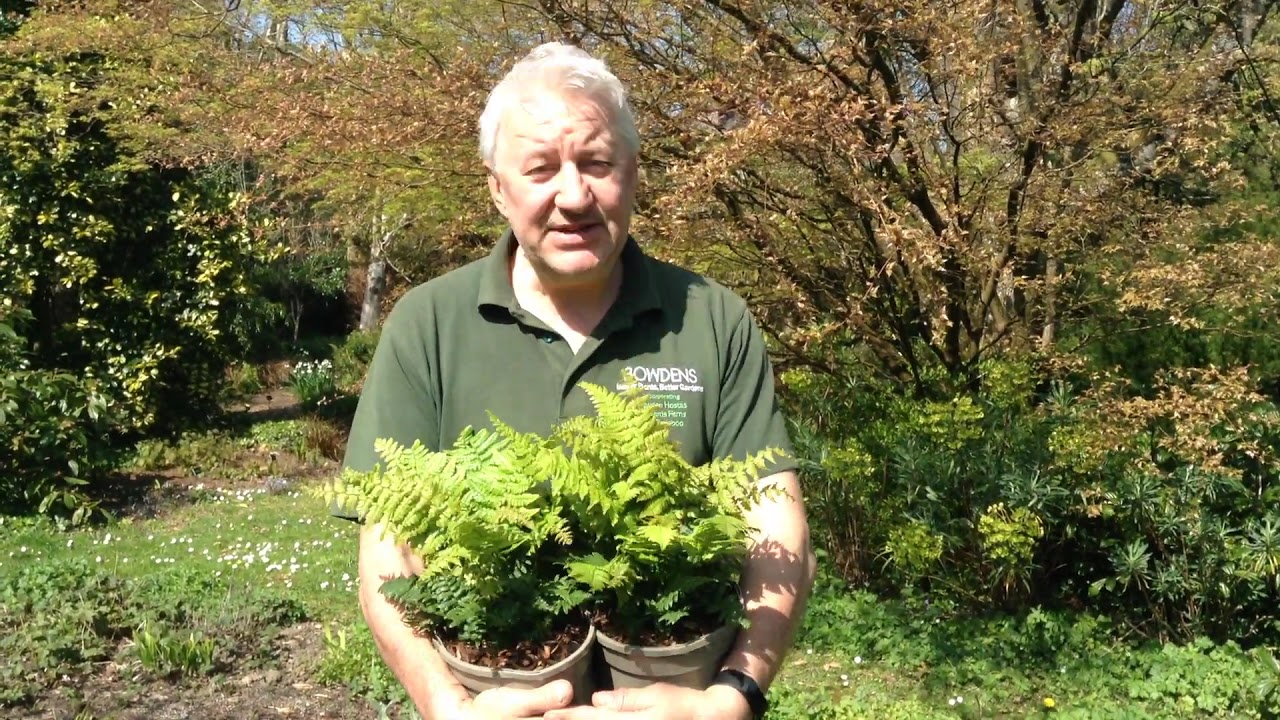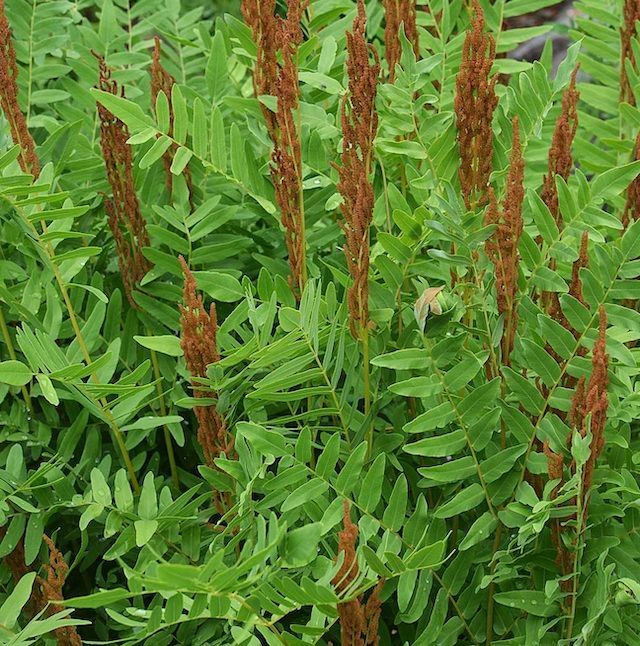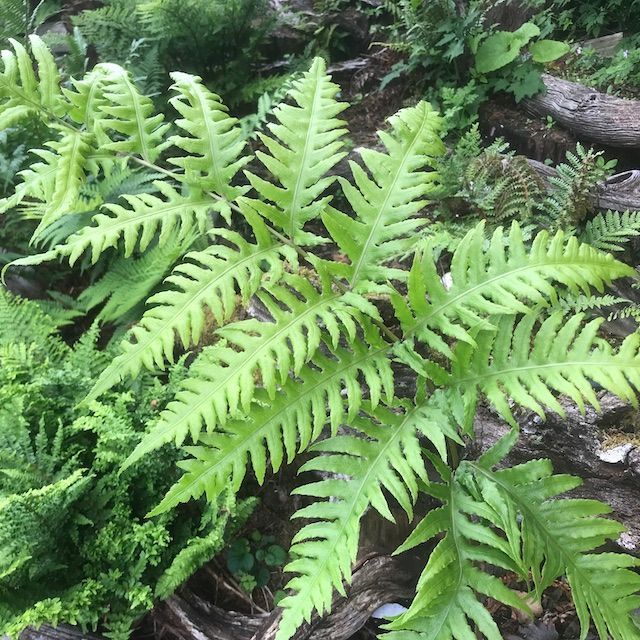Contact:
Bowdens Nursery,
Bowden Place,
Sticklepath,
Devon,
EX20 2NL
Call: 01837 849367
Email: sales@bowdensnursery.com
Give us a call: 01837 849367
About Ferns
When dinosaurs were the king of all animals, ferns were everywhere. A fern is any one of a group of about 12,000 species of plants belonging to the botanical group known as Pteridophyta.
Many of our ferns are fully hardy, easily surviving whatever the British weather might throw at them. We also supply tender and no less beautiful ferns aiming to cover a wide range of ferny tastes. We can advise on what to grow and when and how to grow them, courtesy of our resident experts and fern legends Martin Rickard and Dick Hayward.
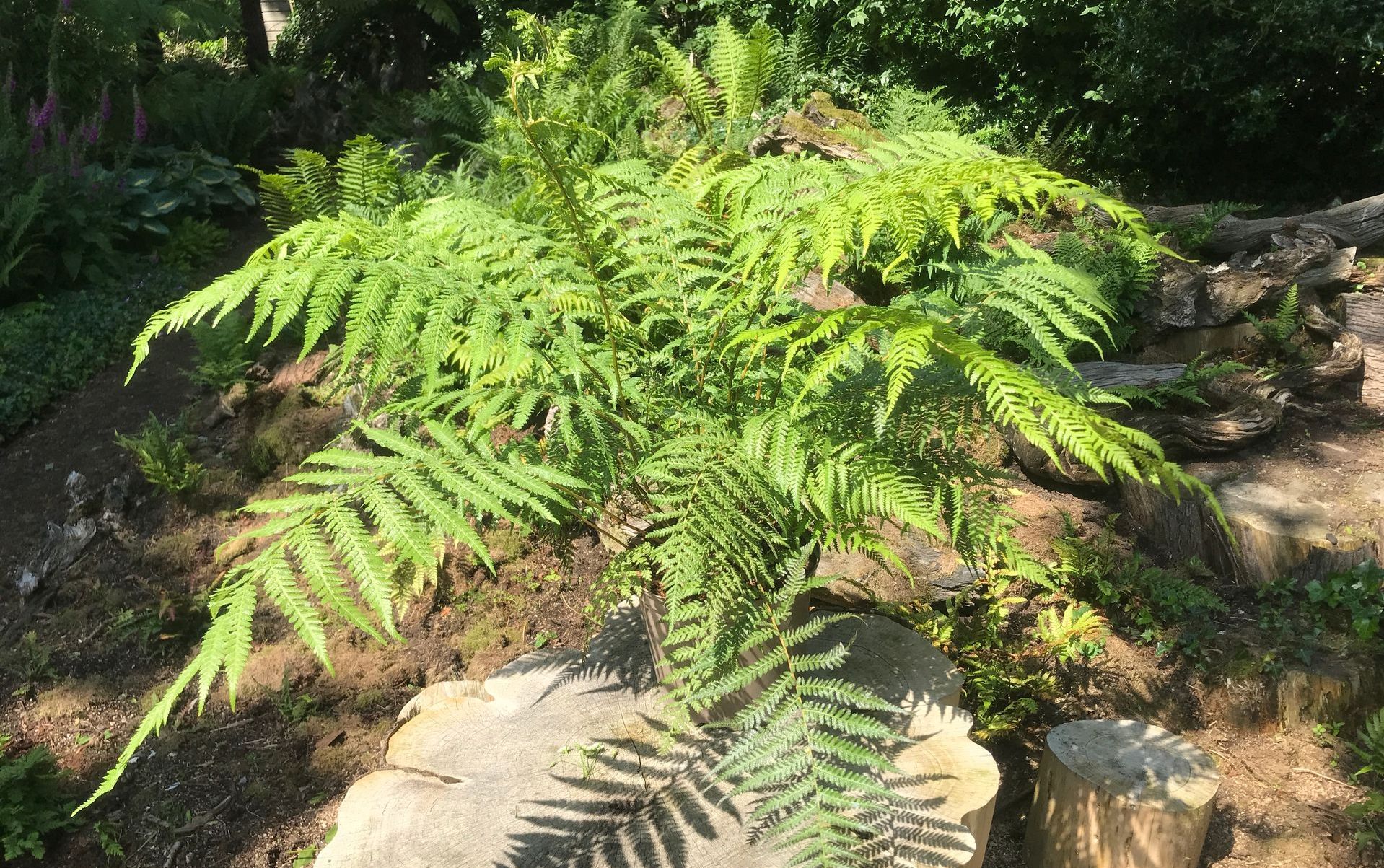
Appearance
Ferns add texture like no other perennial - graceful and airy, despite their hardiness and willingness to grow. Their fronds come in a breathtaking range of shapes, sizes, and shades of green, making for a breathtaking addition to any garden.
Planting
In the wild, ferns thrive in the dappled shade of the woodland, finding their feet in rotted leaves and other rich soil ingredients. Ferns crave moisture to thrive and therefore still retain a love of the humidity and shadiness that existed in the primeval forest. Very few can tolerate dry soils, and all prefer a good pampering their first two years - lots of water and humus!
Life Cycle
Ferns have no pollen, no seeds and a life cycle that is unlike any other plant. They have fine fibrous roots, crowns from which the fronds arise and organs on the fronds that form part of the reproductive process – ferns have neither seeds nor flowers. Most are easily divided after two or three years in your garden, increasing your plant stock.
Add Green to Your Garden
There are ferns that are native to the Tropics, huge tree ferns from Australia and New Zealand, and British natives and Japanese Painted Ferns. Much of the subtle differences lie in the shape of the frond, or the way the frond develops. They are really quite extraordinary plants. There are outdoor and indoor ferns, hardy, half-hardy, and tender. They provide a tremendous range of greens for your garden and go so well with hostas and grasses and bamboos.
How to Care for Your Ferns
From how to establish new ferns to protecting against rot, get these top tips on how to care for your ferns.
Planting Your Fern
Try to find a place in the shade for ferns. They ask for very little care and repay you with ease of growth and breathtaking beauty.
Work the soil well and deep before you plant your fern, raising the bed at least 3 inches above the soil level. If you have heavy soil, lighten it with rotted leaves or coarse bark. Plant your fern very shallowly, with the crown flush with the surrounding soil. Water well until established.
Ferns will thrive with both moisture and excellent drainage and a good, rich mulch works wonders.
Keep garden debris away from the base of your ferns if you can. Rot can be a problem when the crown of the fern sits in stagnant water, though some, such as the Tatting Fern, will happily rest in an inch or so of water on the bank of a stream or pond. If you see signs of rot, apply a fungicide and the chances are your fern will shake it off.
If possible, water the roots and not the fronds.
Ferns grow happily in pots, so this may be an option for you, particularly with tender ferns which can then be brought into a frost-free environment for the winter.
Through the Year
Ferns require little, if any, extra feeding. An annual mulch will give them a boost as well as helping to conserve moisture and suppress weeds.
Deciduous ferns can have their fronds removed when they look untidy in early winter, or they can be left until spring. Remove them before the new croziers start to unfurl, though, as it is easy to damage the fresh, new growth.
Evergreen ferns will benefit from a once-over in spring, with any unsightly fronds removed.
Ferns are generally unfussy and should provide you with years of charming green texture.
How to Care for Your Tree Ferns
Tree ferns grow under the forest canopy in partially shaded areas and are best suited to a sheltered, moist environment. They like protection from drying winds and mid-day sun (although if well-watered most can tolerate sunny situations). In the wild, they are often found thriving in areas where few other plants survive.
Growing Your Tree Ferns
On arrival, your tree fern should be anchored vertically and thoroughly soaked (remember to water the crown of the plant). At first water every day until the fronds start to emerge. At this point the use of Tree Fern Feed will help to encourage vigorous foliage and root growth.
So, during the growing season as the fronds start to move, feed weekly into the crown of your tree fern. Also be sure to water regularly during the Spring and Summer to ensure the crown of your tree fern is always kept moist.
Ferns are considered to be 'top feeders' as the plant growth area occupies approx. 30-60cm below the crown or top of the plant. The remainder of the trunk is made up of the root system and old frond bases. In its natural environment, the crown is often found to be full of decaying leaf matter that has fallen from the canopy above. This helps retain moisture, protects the crown in winter from the cold and provides nutrient as the leaf matter decomposes. A large amount of moisture and nutrient exchange is through the crown, so it would be serious neglect not to water and feed ferns from the top.
Wintering Your Tree Ferns
From October to April protect your tree fern from the cold by bringing it into a frost free environment, maybe a cool conservatory. If it is staying outside, use any browned fronds, fleece or lambswool to protect the crown and top 50 cm of the trunk.
We also sell Haxnicks Tree Fern Fleeces which are straightforward to put on (well, it depends a bit how tall you are relative to your tree fern).
Cut off any brown fronds in the spring, leaving at least 15 cm attached to form the growing trunk.
Meet Our Fern Specialists
Martin Rickard and Dick Hayward are well-known specialists with a love for everything ferny. They are consultants for Bowdens, providing years of expertise. These good friends joined Bowdens when we acquired Rickards Hardy Ferns in 2011.
Get in Touch for Advice
Please always feel free to call us for advice when it comes to your plants! We can provide some tailored tips about your situation on 01837 849367. We love hearing from our customers!
Join Fellow Fern Enthusiasts!
The British Pteridological Society provides a number of benefits to its members including plant and spore exchanges, exclusive trips, and access to some hard-to-find and old fern books.
Visit Our Gardens
Bowdens is home to two nationally recognised gardens and many breathtaking ferns. We welcome you to take a tour to enjoy these ancient plants alongside agapanthus, hostas, and more. We can even provide customisable tour options, perfect for fern lovers and gardening enthusiasts.
Don't Forget Bowdens' Gardening Talks!
Our gardening talks are available throughout the year! Whether you want to get the ins and outs of fern care or learn more about creating a show garden, we’ll be happy to visit your garden club or special event.
MENU:
GET IN TOUCH:
Bowdens Nursery,
Bowden Place,
Sticklepath,
Devon,
EX20 2NL
Call: 01837 849367
Email: sales@bowdensnursery.com
Get Regular Special Offers
Sign up for regular special offers from Bowdens Nursery! All gardeners, beginner or advanced, are welcome to sign up for these exclusive deals.
Contact us
We will get back to you as soon as possible
Please try again later


